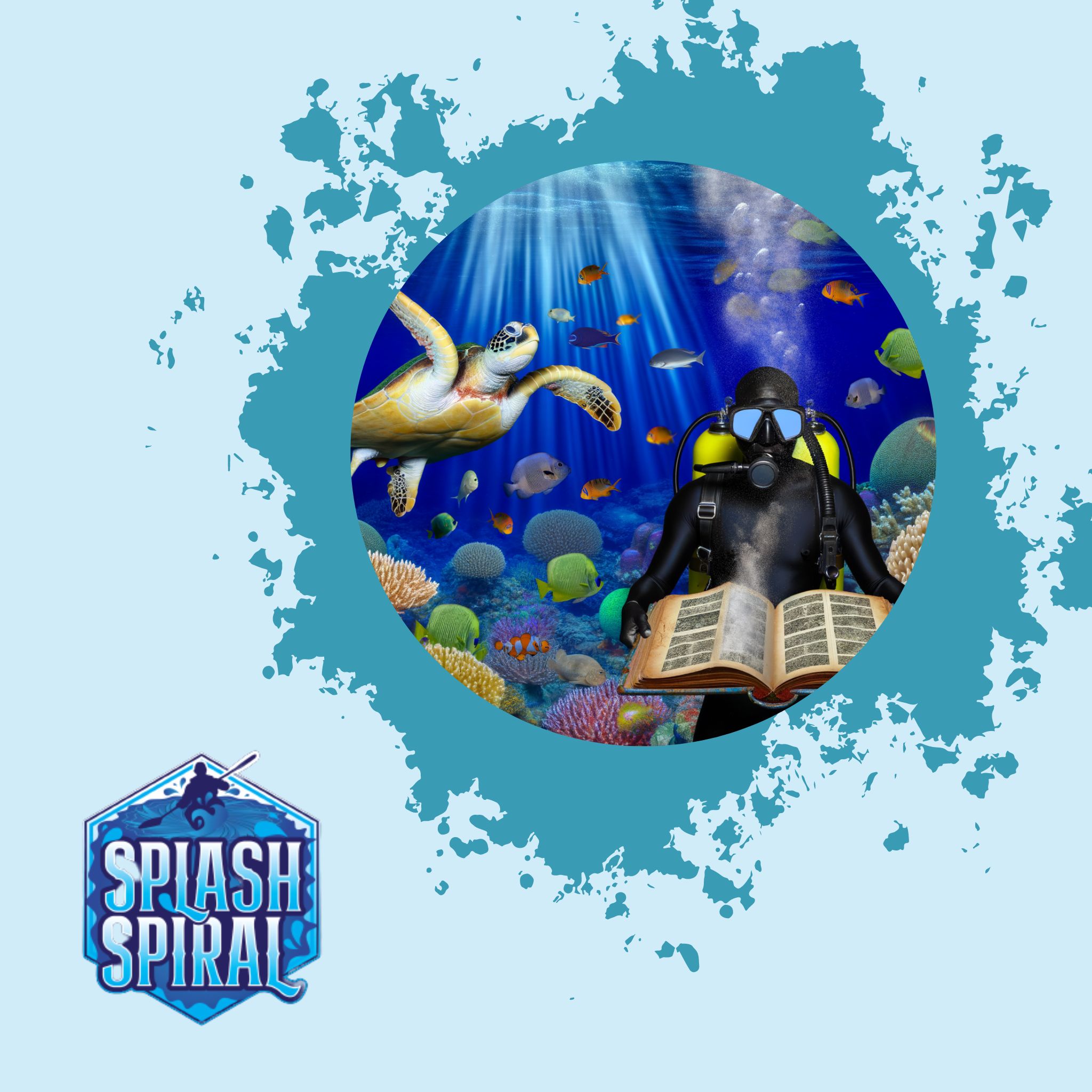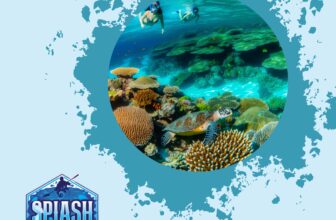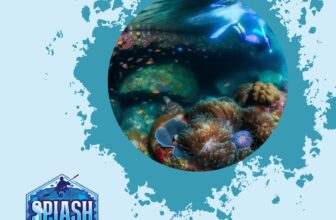
Diving into the world of underwater photography is both thrilling and challenging. Whether you're capturing the vibrant life in coral reefs or the haunting beauty of a submerged shipwreck, the right knowledge and inspiration can make all the difference. Below, we've curated a list of essential underwater photography books that should be on every beginner's shelf.
Introduction
When you're just starting out in underwater photography, books can be your best friend. They offer a wealth of knowledge, time-tested techniques, and a deep dive into the experiences of seasoned photographers, all at your fingertips. Whether you're mastering the basics like adjusting white balance and achieving perfect buoyancy or exploring advanced techniques like shooting in low light and capturing fast-moving marine life, these resources can transform your underwater adventures.
Books also broaden your horizons beyond still photography. Many delve into underwater videography, offering tips on everything from gear selection to filming techniques, ensuring you capture the fluid charm of the underwater world. So, if you're keen to improve your skills or need some creative inspiration, flicking through the pages of these underwater photography essentials can provide just the motivation you need.
Why Read Underwater Photography Books?
Diving into underwater photography isn't just about strapping on a camera and jumping into the ocean. There's a whole world of technical nuances that can make or break your shots. Books on underwater photography are invaluable because they cover everything from the basics, like how water affects light and color, to more advanced techniques that will have you shooting like a pro.
Key Benefits
- Technical Knowledge: Learn how water affects light and color.
- Advanced Techniques: Gain skills that help you shoot like a professional.
- Insider Tips: Access tips you wouldn't usually find online or learn through trial and error, saving you both time and frustration.
Expert Insights
Moreover, these books often feature insights from seasoned photographers who've spent years perfecting their craft beneath the waves. Their experiences, shared in their own words, can provide a roadmap for your underwater photography journey.
What You Can Learn:
- Best times of day to shoot,
- Positioning techniques for perfect frames.
Expanding Into Marine Videography
Additionally, underwater photography books often delve into marine videography, shedding light on the intricacies of shooting compelling underwater video.
Topics Covered:
- Choosing the right gear,
- Mastering video shooting techniques.
Whether you're aiming to capture the fluid, mesmerizing motion of underwater life or the eerie stillness of a sunken ship, you'll find targeted advice to help you get started.
Conclusion
In short, reading underwater photography books can elevate your craft, providing you with both the technical know-how and the creative inspiration to make your underwater excursions truly memorable.
Top Picks for Underwater Photography Books
When starting out in underwater photography, arming yourself with the right literature is like having a seasoned diver guiding you through the depths. Not just any book will do—these are top picks curated specifically to elevate your underwater photography journey.
1. "The Underwater Photographer" by Martin Edge
Martin Edge's "The Underwater Photographer" is a staple in the underwater photography community. Beginners will appreciate its clear explanations of the basics, from choosing the right gear to understanding buoyancy control. For those ready to advance, it delves into complex techniques like manual exposure, advanced strobe positioning, and creative lighting setups. The book even touches on videography lighting, an often-overlooked component essential for capturing vibrant underwater scenes.
2. "Underwater Photography Masterclass" by Alex Mustard
Alex Mustard’s "Underwater Photography Masterclass" is a treasure trove of information. It's not just a book; it's a comprehensive guide that breaks down the nitty-gritty of mastering underwater photography. Mustard covers innovative techniques and offers practical tips on everything from equipment maintenance to framing your shots. What sets this book apart is its dual focus on both still photography and filming underwater, making it a versatile resource for those eyeing marine videography.
3. "Underwater Photography" by Tobias Friedrich
Tobias Friedrich’s "Underwater Photography" is known for its rich insights into composition and lighting techniques. Friedrich’s advice is straightforward yet profound, offering simple tips that can have a significant impact on your photos. The book is designed to be beginner-friendly, explaining complex concepts in easy-to-understand language, yet it also contains advanced techniques that experienced photographers will find valuable. Whether you're shooting macro or wide-angle, Friedrich covers it all.
4. "The Art of Underwater Photography" by Andrea Ferrari & Antonella Ferrari
"The Art of Underwater Photography" by Andrea and Antonella Ferrari explores the more creative side of underwater shooting. The Ferraris focus on capturing the perfect shot by understanding the behavior of marine life and working with natural light. They offer tailored advice on filming in varied environments, from bustling coral reefs to the eerie silence of underwater caves. This book is perfect for those looking to infuse artistic flair into their underwater work.
These books are your passports to underwater excellence. Whether you're just starting or looking to fine-tune your skills, each offers unique insights that cater to different aspects of underwater photography and videography. Dive in, get inspired, and start capturing the mesmerizing underwater world.
Additional Resources
To continue your journey in underwater photography and videography, there are several invaluable resources beyond books. These can provide you with real-time advice, updates on the latest techniques, and interactive learning opportunities.
Websites for Further Learning
-
Best Software for Editing Underwater Videos: This website provides a comprehensive guide to the best software tools for editing your underwater footage. Post-production is crucial in underwater videography to correct colors, enhance clarity, and create visually stunning videos. Whether you're using Adobe Premiere Pro, Final Cut Pro, or DaVinci Resolve, this guide will help you pick the right tool and maximize its potential.
-
Capturing Shipwrecks: Tips for Underwater Wreck Photography: If you're fascinated by shipwreck photography, this guide dives deep into capturing these enigmatic underwater subjects. It covers everything from selecting the right gear, understanding the best times to shoot, and tips on lighting and composition to bring the eerie beauty of shipwrecks to life through your lens.
Courses and Workshops
In addition to self-study through books and websites, enrolling in courses and participating in workshops can significantly enhance your skills. Here are a few reputable resources:
-
Online Courses: Platforms like Udemy and MasterClass offer structured courses led by professional underwater photographers. These courses cover a range of topics, from basic techniques to advanced methods, and often include video lessons, assignments, and feedback from instructors.
-
Workshops: Many diving schools and underwater photography experts host workshops that offer hands-on experience. Workshops often take place in exotic locations with rich marine biodiversity, giving you the chance to practice your skills in real-world conditions. Look out for workshops that focus specifically on marine videography to hone your filming techniques.
By leveraging these additional resources, you can continue to develop your skills and become a more proficient underwater photographer and videographer. Whether through structured courses or practical workshops, the key is to keep learning and experimenting. The underwater world is vast and ever-changing, and staying updated with the latest techniques and technologies will help you capture its beauty in the most stunning ways possible.
Video Shooting Tips for Underwater Photography
Practical Tips for Shooting High-Quality Underwater Videos
Venturing into underwater videography can be as rewarding as it is demanding. Here are a few practical tips to help you capture stunning footage beneath the waves:
-
Stabilize Your Camera
- Use a tripod, a monopod, or even your buoyancy to keep your camera stable. A steady shot is crucial for high-quality underwater video.
-
Master Your Buoyancy
- Good buoyancy control not only helps in getting stable shots but also keeps you from disturbing marine life and the environment around you.
-
Get Close to Your Subject
- Water reduces contrast, and colors fade with distance. The closer you are to your subject, the sharper and more vibrant your video will be.
-
Plan Your Shots
- Like any good film, your underwater video will benefit from planning out your shots. Think about angles, lighting, and movement beforehand.
-
Capture the Environment
- Don’t just focus on marine life; include shots of the seascape to give your video context and a sense of place.
Recommendations for Underwater Video Gear
Selecting the right gear is vital for successful underwater videography. Here’s what you should consider:
-
Underwater Housings
- Ensure your camera has a reliable underwater housing that can withstand the depths you intend to dive.
-
Lights
- Underwater environments are often low-light, so investing in good-quality underwater video lights can make a significant difference. Look for lights with adjustable power settings and a wide beam angle.
-
GoPro or Action Cameras
- These are popular for their compact size and durability. Many action cameras also come with underwater housings and accessories tailored for shooting video.
- Filters
- Red filters are particularly useful for underwater videography as they help restore the colors that are lost as you go deeper.
Best Practices for Videography Lighting in Various Underwater Conditions
Lighting is perhaps the most challenging aspect of underwater videography. Here’s how to tackle it:
-
Natural Light
- Utilize sunlight when possible, especially in shallow waters. Shooting with the sun behind you can illuminate your subjects beautifully.
-
Artificial Lighting
- In deeper or overcast conditions, rely on your video lights. Position lights at a 45-degree angle to avoid backscatter (tiny particles that reflect light back into your lens).
-
Color Correction
- Water absorbs different wavelengths of light, giving an overall blue or green hue to your footage. Use color correction in post-production or adjust your white balance manually while filming.
- Check and Adjust Frequently
- Conditions underwater can change rapidly, so frequently check and adjust your lighting setup to adapt to new circumstances.
By using these practical tips, recommended gear, and lighting best practices, you'll be well-equipped to create stunning underwater videos that capture the awe-inspiring beauty and mystery of marine environments. Happy diving and filming!
Diving Deeper: Advanced Marine Videography
Venturing into advanced marine videography brings a new set of challenges and rewards. Here’s how to elevate your filming from simple clips to cinematic underwater stories.
Advanced Techniques for Filming Underwater
Mastering advanced videography starts with understanding your subject’s behavior. Marine life has its own rhythm; learning when and where to film can enhance your footage dramatically. This can mean knowing the best times to capture specific species or recognizing patterns in their movements.
Layering techniques such as slow-motion can bring an ethereal quality to scenes, especially when capturing the fluid grace of sea creatures. Pair this with advanced focus techniques to maintain clarity, even when your subject is moving. Additionally, try experimenting with different angles and distances to bring out dynamic perspectives.
Common Challenges and How to Overcome Them
Underwater videography isn’t without its hurdles. One major challenge is maintaining stability in a fluid environment. Using a tripod specifically designed for underwater use can stabilize your shots. Alternatively, practice buoyancy control; it’s about perfecting your own underwater movement to avoid shaky footage.
Lighting is another tricky aspect. Natural light diminishes as you go deeper, altering colors and reducing visibility. Invest in high-quality underwater lights that replicate daylight to bring out the true colors of the underwater environment. Always check white balance and exposure settings to ensure your footage accurately reflects the underwater wonder.
Importance of Continuous Learning and Adapting to New Technology
Technology in underwater videography is continuously evolving. Newer, more efficient equipment makes capturing high-quality footage easier and more enjoyable. Stay informed about the latest gear and techniques by regularly reading industry blogs, joining underwater photography communities, and attending workshops.
Adapting to new technology can also mean exploring software updates or adopting new editing techniques. Post-production plays a crucial role in storytelling, allowing you to enhance colors, correct distortions, and trim footage to create seamless narratives.
Continuous learning isn’t just about staying current— it sharpens your skills and fuels your creativity, ensuring your work continues to improve and inspire. So, don’t hesitate to invest time in mastering new tools and techniques; the underwater world is vast and ever-changing, and your videography should reflect its beauty and complexity.
By tackling these advanced aspects, your underwater videography can become more expressive and technically polished, capturing the mesmerizing world beneath the waves in all its splendor.
Conclusion
Having the right resources on your bookshelf can be a game-changer when it comes to mastering underwater photography. The books we've highlighted provide a treasure trove of knowledge, from the technical aspects to the artistic nuances of capturing life beneath the waves. They are instrumental not only in getting you started but also in refining your skills as you dive deeper into this captivating hobby.
Don't limit yourself to books alone. The websites and courses listed offer an excellent supplement to your learning, providing up-to-the-minute tips and community support. Whether it's unraveling the mysteries of marine videography or zeroing in on the perfect gear, continuous learning and adaptability are your best tools.
So grab a book, sign up for a course, and submerge yourself in the mesmerizing world of underwater photography. Your next great shot is just a dive away.







